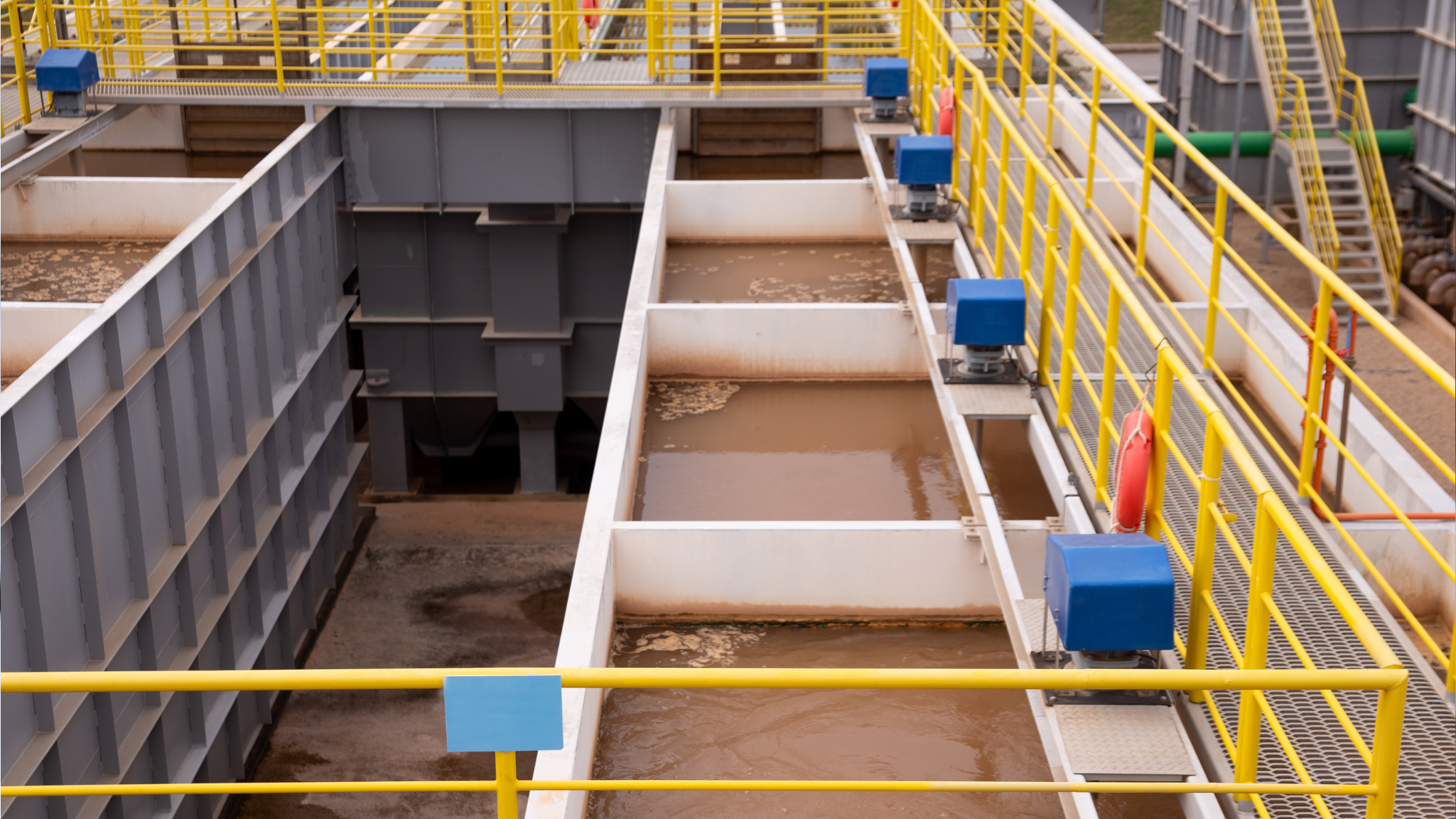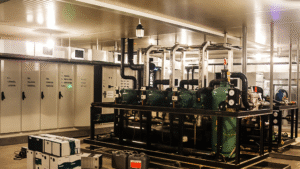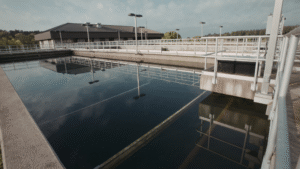When it comes to water treatment and wastewater treatment, coagulation isn’t just the first step in your treatment process, but a make or break. Get it right, and you set your whole system up for smooth sailing. Get it wrong, and you’re looking at poor turbidity removal, fouled membranes, excess sludge, or a clarifier that just won’t cooperate.
Coagulants are the heavy lifters in removing suspended solids, organic matter, and other fine particulates before they wreak havoc downstream. But not all coagulants are created equal, and using the wrong one, or the right one incorrectly, can cost you in performance, compliance, and chemical spend.
At ETI, we’re the blending partner behind many of the industry’s most reliable coagulants for water treatment programs – formulating smarter, cleaner, and more efficient solutions that help water treaters deliver results. Here, we’ll lay out everything you need to know about selecting and applying industrial coagulants.
What Are Coagulants and How Do They Work?
Coagulants play a fundamental role in industrial water and wastewater treatment. They are typically the first chemicals introduced to remove suspended solids, organic matter, and fine particulates that would otherwise remain in suspension and compromise water treatment system performance downstream.
The treatment process works by neutralizing the electrical charges that keep particles dispersed in water. Most suspended particles carry a negative surface charge, which causes them to repel one another. When a coagulant is introduced, it destabilizes this charge, allowing the particles to come together and form “microflocs,” a process known as coagulation.
Following coagulation, the next step is often flocculation, which involves slower mixing to encourage the formation of larger, more settleable flocs. Together, these two processes allow for efficient removal of turbidity, color, metals, and organics in both clarification and filtration systems.
Several factors influence the effectiveness of coagulation:
- pH and alkalinity: Some coagulants require specific pH ranges to perform optimally.
- Temperature: Reaction kinetics can slow down significantly in colder water.
- Mixing conditions: Proper rapid mixing immediately after chemical injection is critical for full dispersion and performance.
It’s important to note that not all coagulants behave the same way, and water chemistry can vary widely between facilities, even from season to season.
Types of Coagulants for Water Treatment
Industrial coagulants generally fall into three main categories: inorganic, organic, and natural/green alternatives. Each has its own performance characteristics, advantages, and limitations depending on the application and system requirements.
Inorganic Coagulants
Inorganic coagulants are the most widely used coagulants in industrial and municipal systems. They include:
- Aluminum-based: Aluminum sulfate (alum), polyaluminum chloride (PAC)
- Iron-based: Ferric chloride, ferric sulfate
Inorganic coagulants work by forming metal hydroxide precipitates that sweep suspended particles out of solution. They are effective across a wide pH range, readily available, and relatively low cost. However, inorganic coagulants tend to produce more hazardous sludge, which can increase disposal costs for water treatment plants. Performance can also be sensitive to changes in raw water chemistry.
Common uses: Clarification, turbidity removal, phosphorus reduction, pretreatment for membrane systems.
Organic Coagulants
These include synthetic coagulant polymers such as:
- Polyamines
- Polydiallyldimethylammonium chloride (polyDADMAC)
- Epi-DMA-based formulations
Organic coagulants are highly efficient at charge neutralization and tend to generate less sludge than other types of coagulants such as their inorganic counterparts. They are often used alone or in combination with flocculants for systems that require lower solids loading or where sludge handling is a concern.
Common uses: DAF systems, wastewater treatment systems with strict sludge volume limitations.
Natural and Green Coagulants
Plant-based and biodegradable coagulants, such as those derived from tannins, are gaining traction in systems aiming to reduce environmental impact. These products can offer comparable performance to traditional coagulants with the added benefit of being more sustainable and safer to handle.
Common uses: Facilities seeking greener operations, food & beverage plants, or locations under strict chemical discharge regulations.
Key Factors in Coagulants for Water Treatment Selection
Choosing the right coagulant isn’t just about what’s in the drum, it’s about how that chemistry interacts with your water, your system, and your goals. A product that works perfectly in one application may underperform or cause issues in another. That’s why coagulant selection is always context-driven.
Here are the key variables that must be evaluated:
1. Water Quality Parameters
Understanding the incoming water’s chemistry is the first step. Factors like:
- pH and alkalinity: These affect the charge interactions and solubility of coagulants.
- Turbidity and suspended solids: Higher loadings often require stronger or dual coagulants.
- Temperature: Cold water slows reaction rates, impacting performance.
- Natural organic matter (NOM): Impacts coagulant demand and sludge production.
2. Treatment System Design
The type of equipment in use affects the ideal type of coagulant:
- Clarifiers vs. DAF systems may require different coagulation strategies.
- Short residence times call for fast-reacting coagulants.
- Inline mixing systems demand products with good dispersion characteristics.
3. Downstream Processes and Compatibility
Coagulants don’t operate in a vacuum, they must work in tandem with the full treatment program. Poor compatibility with:
- pH adjusters
- Polymers
- Scale inhibitors or oxidizers
…can cause precipitation, fouling, or reduced treatment performance. ETI routinely evaluates these interactions to prevent conflicts before they occur.
4. Regulatory and Operational Goals
- Discharge permit limits (for metals, phosphorus, BOD, etc.) may dictate the coagulant type or dosage.
- Sludge generation and disposal costs are often a deciding factor.
- Safety and handling requirements also play a role in product selection.
Common Application Points and Equipment
To get the most out of any coagulant, where and how it’s applied matters just as much as the chemistry itself. A well-chosen coagulant can still underperform if it’s injected in the wrong spot or without proper mixing.
Here are the typical application points and equipment setups used in industrial systems:
Injection Points
- Raw Water Intake: Coagulants are often dosed early in the water treatment process to reduce suspended solids before clarification or filtration.
- Clarifiers or Sedimentation Basins: In systems with settling tanks, coagulants help promote floc formation in water treatment plants for easier removal.
- DAF Units (Dissolved Air Flotation): Coagulants assist in forming floatable floc for effective separation of solids and fats.
- Pre-Filtration: For systems using ultrafiltration (UF), nanofiltration (NF), or reverse osmosis (RO), coagulation is used upstream to protect membrane surfaces.
Equipment Considerations
- Chemical Metering Pumps: Precision dosing equipment is critical as too much coagulant can destabilize the system, while too little may be ineffective.
- Inline Static Mixers or Flash Mix Tanks: Rapid mixing immediately after injection ensures even dispersion and proper particle contact.
- Secondary Flocculation Basins: Gentle mixing zones follow coagulation to allow microflocs to combine into larger, settleable particles.
Proper system design and chemical feed control can dramatically improve coagulant efficiency and reduce waste. Our chemical blenders supports customers with guidance on best practices for injection strategies and compatibility with their existing equipment, ensuring their coagulant works exactly where and when it should.
Best Practices for Dosing and Monitoring
Getting coagulation right isn’t just about selecting the right chemical, but is also about dialing in the right dose and keeping it consistent under changing conditions. Overdosing leads to chemical waste, sludge buildup, and potential fouling. Underdosing compromises removal efficiency and puts downstream systems at risk.
ETI works with treatment professionals to ensure their coagulants are not only dosed correctly but monitored effectively. Whether through basic jar testing or integrated automation, the goal is the same: consistent, efficient performance without waste or guesswork.
Here’s how to stay on target:
Start with Jar Testing
Before any product hits the system, bench-scale jar testing should be performed using actual process water. This helps:
- Identify the ideal dosage range
- Evaluate how coagulants interact with existing water chemistry
- Test performance at various pH levels and temperatures
ETI frequently supports partners with jar testing protocols and analysis to fine-tune product selection and dosing guidelines.
Monitor Key Indicators
Once the program is in place, real-time or routine monitoring is critical. Common indicators include:
- Turbidity (before and after treatment)
- pH
- Streaming current or zeta potential
- Sludge volume or solids capture rate
Adjusting dosage based on trends, rather than fixed rates, helps maintain optimal performance as influent conditions shift.
Coagulant Compatibility With Other Treatment Chemicals
In any well-designed water treatment process, coagulants like ferric chloride, ferric sulfate, and aluminum sulfate don’t work alone. They’re part of a broader chemical lineup that may include pH adjusters, flocculants, biocides, scale inhibitors, dispersants, and more. The challenge? Not all chemicals play nicely together.
That’s why chemical compatibility is essential when selecting and applying a coagulant.
Common Interaction Risks
- pH Adjusters: Some coagulants (especially inorganic types like ferric chloride) require a tight pH window. Overdosing acids or bases upstream can reduce coagulant efficiency or cause re-precipitation.
- Polymers and Flocculants: Using the wrong charge type or sequence of addition can lead to polymer breakage or incomplete floc formation during the coagulation process.
- Oxidizing Agents: Coagulants that contain organic compounds may be unstable in systems with strong oxidizers like chlorine or peroxide.
- Antiscalants and Dispersants: If dosed too close to coagulants, these can interfere with metal hydroxide formation or cause fouling on membrane surfaces.
System-Specific Evaluation
Every system has its own chemical “ecosystem.” What works in a cooling tower may not translate to a food processing clarifier. That’s why ETI approaches coagulant formulation with a full-system lens, evaluating product synergy and optimizing chemical sequencing to avoid downstream issues.
When ETI blends or recommends a coagulant, compatibility with other treatments is already built into the strategy. This ensures fewer surprises, less rework, and a more stable treatment process overall.
Sustainability and Cost-Saving Strategies
Modern water treatment programs are under growing pressure to do more with less – less sludge, less chemical usage, less environmental impact. Fortunately, smart coagulant selection can support both sustainability goals and bottom-line savings.
Here are key strategies treatment professionals use to maximize efficiency:
1. High-Efficiency Coagulants
Some advanced coagulants, particularly organic or blended formulations achieve the same or better performance at significantly lower dosages compared to traditional options like aluminum sulfate or ferric chloride. Lower doses mean:
- Reduced chemical consumption
- Less residual metal in treated water
- Smaller sludge volumes to manage and dispose of
2. Coagulant-Flocculant Blends
Blended formulations combine the charge-neutralizing power of a coagulant with the bridging capabilities of a flocculant. When tailored to the system, these products can:
- Simplify dosing programs
- Improve treatment speed and clarity
- Cut down on handling and storage space
ETI specializes in blending multi-function products that reduce the need for multiple separate additives, helping streamline inventory and minimize logistics costs.
3. Natural and Plant-Based Coagulants
Biodegradable options like tannin-based coagulants offer a more sustainable alternative to traditional metal salts. They’re especially valuable in facilities focused on green certifications, safer chemical handling, or compliance with stricter discharge limits.
How ETI Supports Coagulant Programs
Selecting the right coagulant for water treatment is only part of the equation. Ensuring that coagulant integrates seamlessly into a complete treatment program and consistently performs under real-world conditions is where ETI adds value.
Here’s how ETI supports your success:
- Advanced Coagulant Solutions: Whether you’re improving an existing formula or building something from scratch, ETI uses advanced coagulants solutions based on system water chemistry, performance targets, and regulatory requirements.
- Technical Support: ETI helps evaluate how coagulants will interact with other treatment chemicals to avoid conflicts and maintain full system performance.
- Sales Support: For distributors and service providers, ETI offers turnkey solutions—including custom blends, packaging, SDS generation, and labeling—under your brand.
- Sustainability Consulting: Looking to reduce sludge, switch to plant-based coagulants, or consolidate your chemical program? ETI can help you get there without sacrificing results.
From formulation to field performance, ETI is the technical partner behind reliable, efficient coagulant programs.
Let Your Coagulant Work Smarter, Not Harder
Choosing the right coagulant is just the beginning. ETI helps water treatment pros fine-tune performance, reduce waste, and deliver results their clients can count on. Whether you need a custom blend, compatibility insight, or a more sustainable approach, we’ve got your back.
Partner with ETI and bring next-level precision to your coagulant program.





